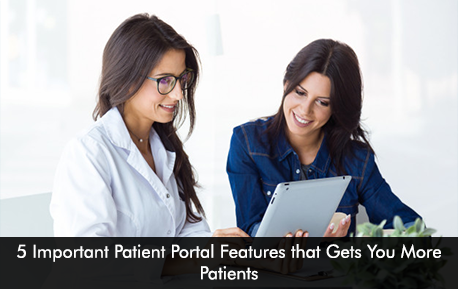Healthcare organizations and providers are positive about using digital healthcare tools. They are deploying software solutions such as Electronic Medical Records (EMR) Software, Patient Portal EMR Software systems, and Patient Scheduling Software to enhance the patient care process and overall patient experience. It also gives ample benefits to staff members as digitizing streamlines administrative and clinical processes.
Patient Barriers in using the Patient Portal Software Platform
We all know that not everyone is tech-savvy with digital tools and software solutions. While healthcare professionals are eager about patient portal services, patients are not completely connived with the value of this robust platform. 62% of hospitals in the United States revealed that less than a quarter of all patients use the patient portal EMR software system. There might be various reasons for this,
- The platform is clunky and difficult to use
- Patients don’t know about the benefits of the patient portal platform
- Practices didn’t take patients on board while deploying the software solution
- The software system lacks functionality
Medical practices need to address the above issues so patients are encouraged to use the patient portal facility for delivering care, engaging with their doctor, and staying updated with their health.
If you have a patient portal software system then the next step for your medical organization is to get more patients involved in using the platform due to its features.
5 Patient Portal Features to get more Patients using the Platform
- A user-friendly interface – A major road-block for patients to use a patient portal is a clunky interface that makes it frustrating for users to operate the system. Patients might be encouraged to use the platform but a negative experience can stop the patient from logging into the patient portal system again. Before opting for a patient portal software system make sure it is easy to use to create simple navigation for patients so they can utilize its maximum potential.
- mobile-app capabilities – Your patient portal services must have a mobile app combination that enables patients to simply log-in from their smartphones. Mobile patient portal solutions are effective, convenient, and flexible giving all the relevant health information in the palms of the patients. A patient might be traveling and still view their results easily and can send secure messages to their practitioner on the go.
- On-line registration and digital forms – The functionality of on-line intake forms helps to reduce patient wait times at the clinic as they can fill out all important information before their appointment. A good patient portal EMR software solution offers the features of digital forms which also helps to streamline front-desk admin tasks.
- HIPAA Compliant messaging – Patient portal solutions offered by top EMR Software vendors offer secured and direct communication with their healthcare provider. This helps patients to send messages instantly if they have a health problem this is especially beneficial for patients living in the outskirts and those who have mobility problems. A HIPAA compliant platform protects and encrypts patient messaging.
- Default API integration – When the patient portal software system has API integration with the EHR software system, an open API can facilitate the patient portal to seamlessly integrate with third-party digital healthcare solutions. Open API is an important feature for providers to seek in their patient portal to help patients gain complete insights into their health by connected portals with digital wearable devices.
Moving Ahead
Patient portal EMR Software platform provides immense value to both patients and practices if used properly with the right tools and features. Patient portals have helped patients to stay on top of their healthcare and wellness routine by empowering them to interact and engage in every point of care. If you think your existing patient portal lacks the above functionalities then it’s surely time to upgrade to a new and powerful platform to offer patient-centric care.







